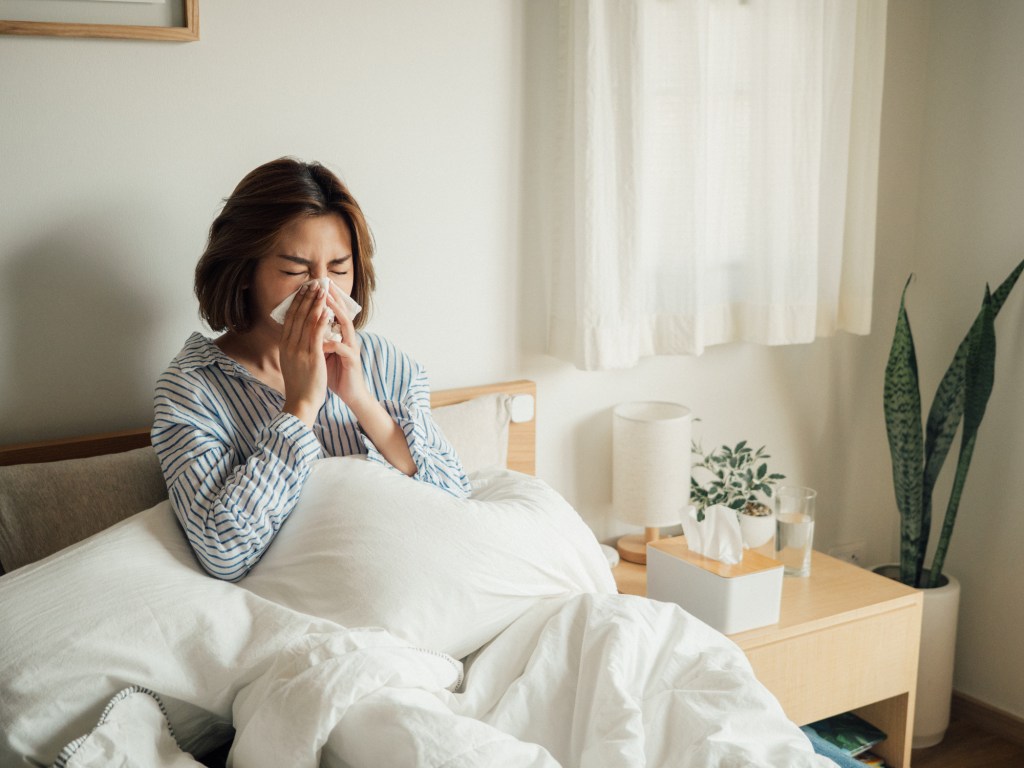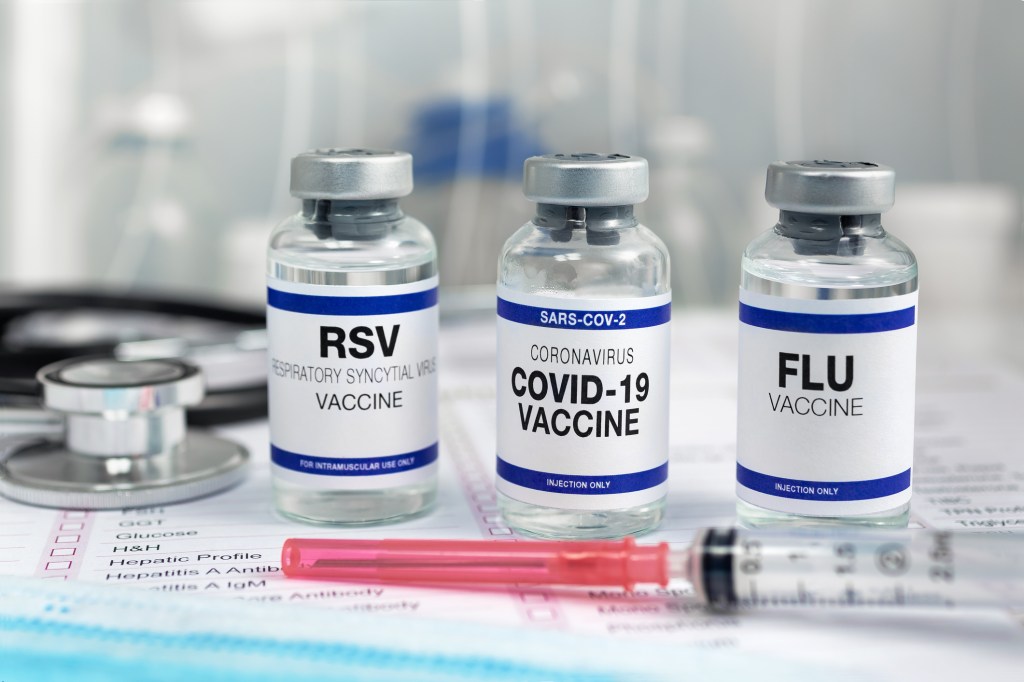Here’s what to know about the ‘quad-demic’ threat that could hit this winter
No one wants a blue Christmas, but a flu Christmas can be much, much worse.
Colds, flus and other respiratory illnesses are more common in the winter. Flu viruses can survive longer in cold, dry air — and people spend lots of time indoors in the chilly months, giving viruses more opportunity to spread.
While respiratory illness season is off to a slow start in the US this year, the Centers for Disease Control and Prevention reported Friday that emergency room visits for COVID-19, flu and respiratory syncytial virus are on the rise.
Unfortunately, it’s possible to get two respiratory viruses at the same time — a phenomenon known as co-infection. Sequential infection is when you get them one after the other.
Luckily, virologists say respiratory viruses and COVID-19 “don’t get along very well together,” and when you get one of these viruses, it can block or limit infection by another virus. That’s called viral interference.
Here’s a look at the four major viruses that could ruin your holiday fun, or what the Brits are calling a “quad-demic,” which could stress emergency rooms this winter.
Flu
Flu season generally runs from October to April or May.
There’s been a recent uptick in people, especially seniors, heading to the emergency room or seeing their doctor and testing positive for the flu, according to the Center for Infectious Disease Research and Policy at the University of Minnesota.
Outpatient visits for flulike illness were noticeably higher last week in Arizona, California, Louisiana, New Jersey, Oregon and the District of Columbia, CIDRAP reported.
Influenza A has been the most common culprit — seasonal flu is typically caused by influenza A or B viruses.
Fever, chills, sore throat and a dry cough are often symptoms of influenza A, as well as headaches, muscle aches, a runny or stuffy nose and fatigue. The flu tends to have more intense symptoms than a cold.
The American Heart Association recommends getting the flu vaccine if you’re older than 6 months, staying away from sick people, washing your hands frequently, keeping your hands away from your face and visiting your doctor if you suspect you have the flu, so you can start treatment right away.
COVID-19
The CDC noted last week that COVID-19 activity is beginning to rise from low levels in some parts of the country.
“Based on CDC-modeled estimates of epidemic growth, we predict COVID-19 illness to increase in the coming weeks as it usually does in the winter,” the agency said.
Wastewater detections are highest in the Midwest, followed by the West and then the South, per CIDRAP.
Get the latest breakthroughs in medicine, diet & nutrition tips and more.
Subscribe to our weekly Post Care newsletter!
Thanks for signing up!
COVID-19 symptoms include fever or chills, cough, breathing troubles, sore throat, congestion or a runny nose, loss of taste or smell, fatigue, muscle or body aches, headache, nausea or vomiting and diarrhea.
The CDC suggests staying up to date with COVID-19 vaccines, practicing good hygiene and going to the doctor if you are at higher risk for severe illness.
RSV
RSV is a highly contagious virus that infects the lungs and respiratory tract. It typically causes mild, cold-like symptoms in adults but can be serious — even life-threatening — for infants and older adults.
RSV season typically runs from December to April, with a peak of infections in the winter.
The CDC describes national RSV activity as “moderate” though it’s continuing to increase in most areas of the country, especially among young children.
RSV symptoms include a runny nose, congestion, less appetite, fever, a cough, sneezes and wheezes.
The American Lung Association endorses RSV vaccination for adults 75 and older and adults between the ages of 60 and 74 at increased risk of severe RSV. A preventative antibody is recommended for babies younger than 8 months old.
The lung association also suggests steering clear of infected people, avoiding cups, bottles or toys that may have been contaminated with the virus, thoroughly washing hands, staying home when sick and cleansing high-touch surfaces.
Norovirus
Norovirus, also known as the “winter vomiting bug,” is a highly contagious virus that’s the leading cause of foodborne illness, vomiting and diarrhea in the US. Cases and outbreaks are most common from November to April.
More norovirus outbreaks have been reported this year through early November compared to past years, according to the CDC.
Besides vomiting and diarrhea, norovirus tends to cause stomach cramps, nausea, low-grade fever or chills, headache and muscle aches.
New York health officials said last week that they are conducting “several gastrointestinal illness investigations” across the state, with some of these cases confirmed to be norovirus.
“It is not uncommon to see outbreaks of norovirus this time of year,” the state healthy agency told news outlets.
To avoid getting norovirus, the CDC suggests cooking shellfish properly, washing fruits and vegetables thoroughly, avoiding preparing food for others when sick and following good food safety practices.
Also be sure to wash your hands, clean contaminated surfaces and clothes and stay home when ill.















